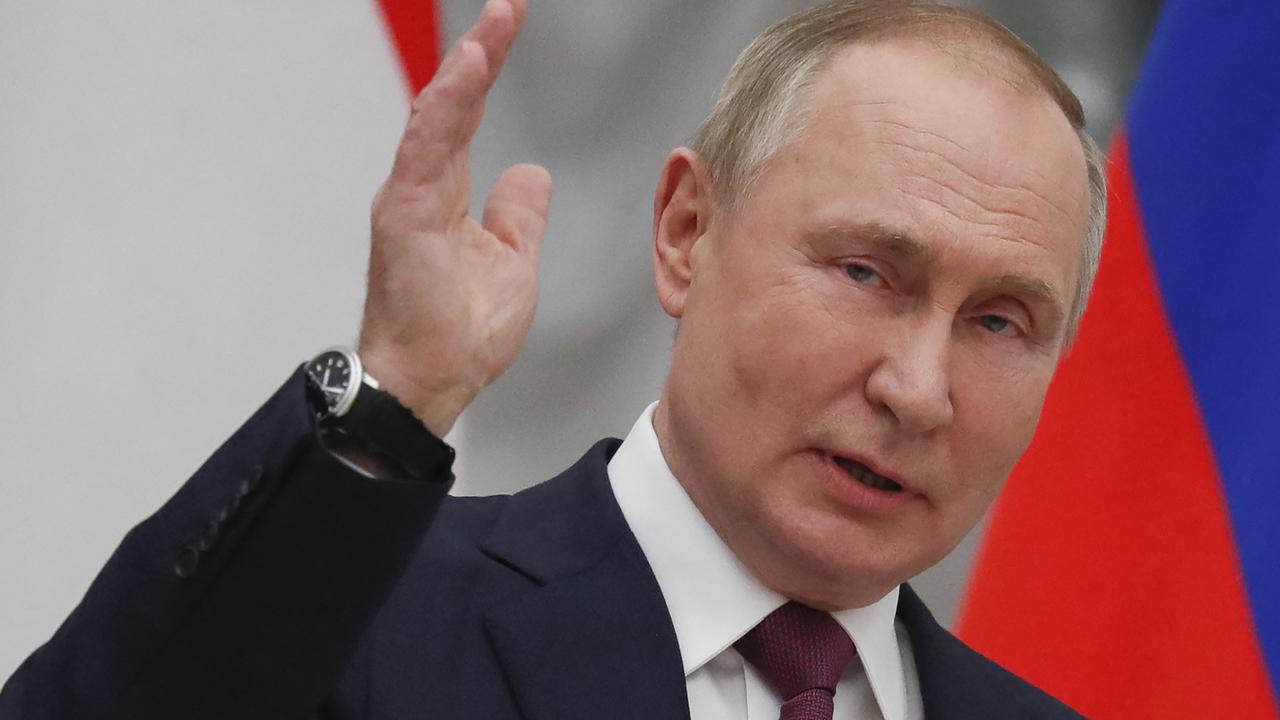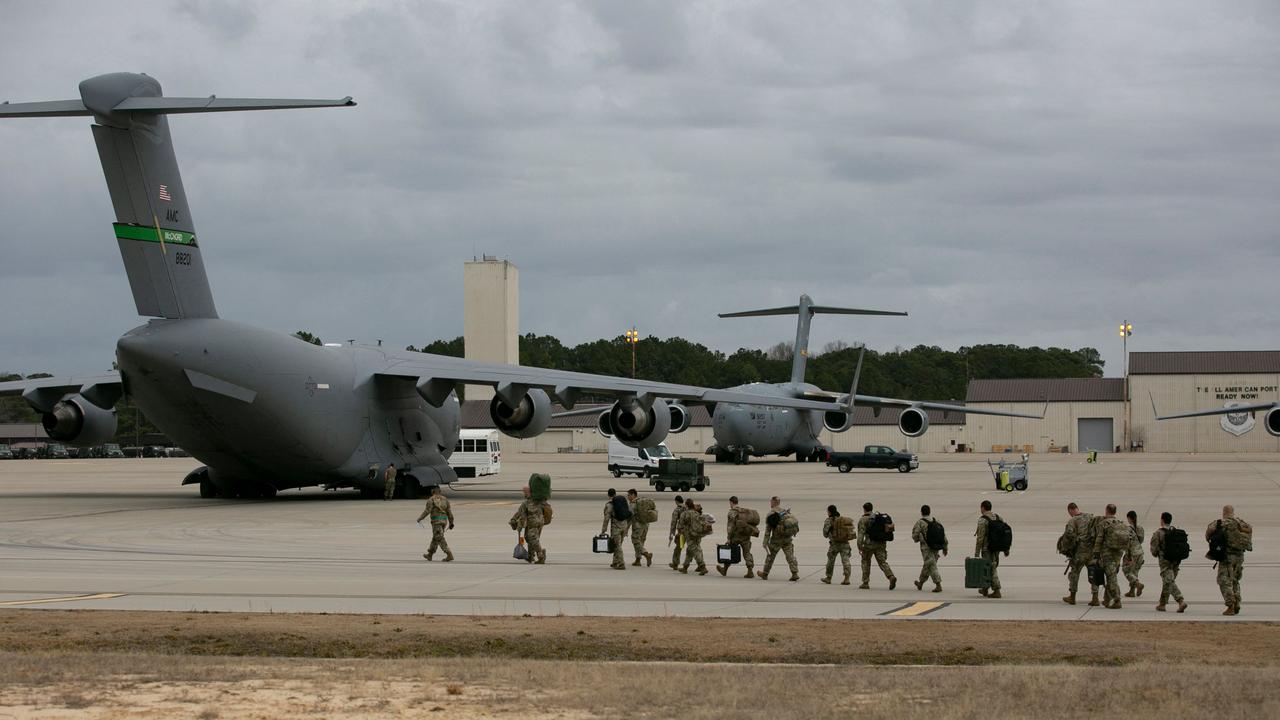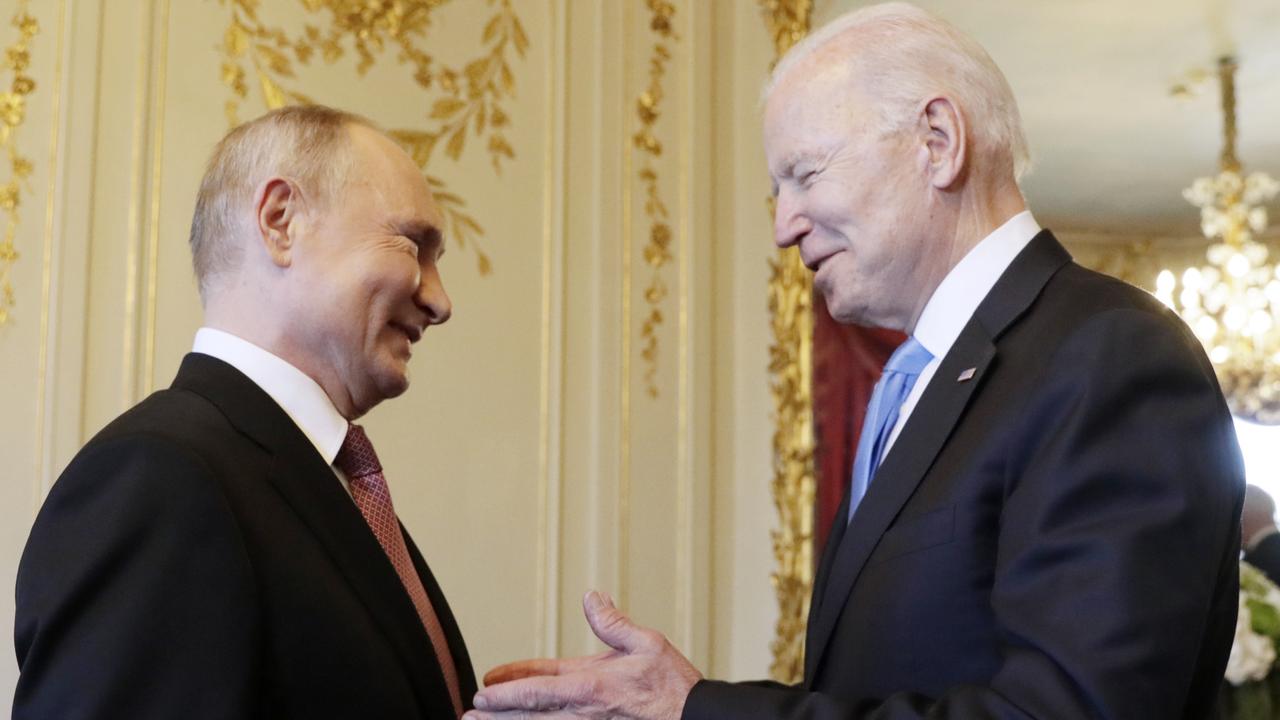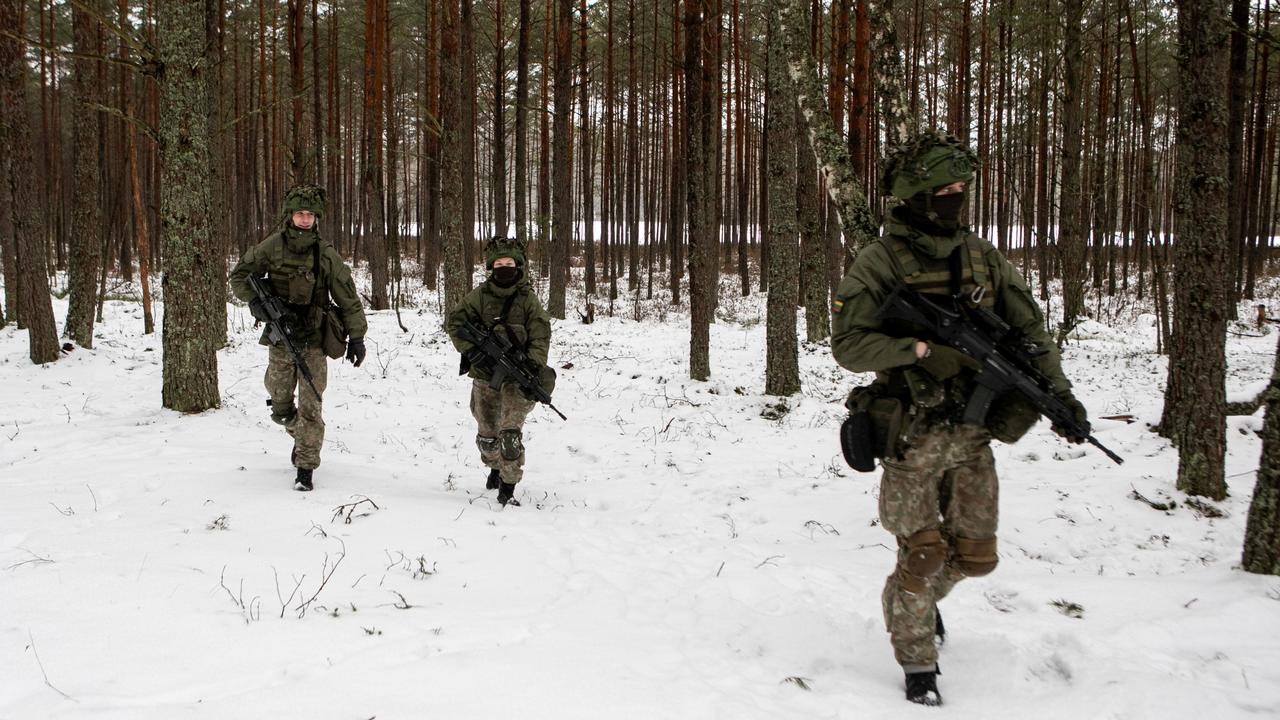US offers Putin an olive branch to check NATO bases for missiles
The US has called Russia’s bluff over one sticking point the former Eastern Bloc power has long complained about – and it’s exposed a hypocrisy.
Washington has offered Moscow the chance to examine NATO bases for the deadly Tomahawk cruise missiles they insist are hidden there. But its caveat may be a deal killer.
It’s a tactful piece of diplomacy that may expose Russian President Vladimir Putin’s posturing over “security” as hypocrisy.
After all, it was his treaty-breaking missiles that triggered a chill in East-West relations in the lead-up to the current crisis.
So what if Putin’s accusation was just a distraction all along?
If his real goal was to drive a wedge between Europe and the United States, it’s backfired – spectacularly. US President Joe Biden has overcome his predecessor Donald Trump’s divisive rhetoric. Now, any invasion of Ukraine would be met by unified opposition. And that leaves the world in a dangerous place.
Strongmen can’t back down – if they do, they’ll look weak. And if they look weak, they tend to get torn down rather quickly.
Stream your news live & on demand with Flash for $8/month and no lock in contracts. New to Flash? Try 14 days free now>

So Mr Putin may need an “off-ramp”, and Washington appears to have quietly offered him one.
The Russian leader’s baseless bluster that the US has positioned intermediate-range missiles in Eastern Europe is a typical ploy: Accuse your opponent of your own crimes.
But now, it may offer an unexpected escape clause.
NATO may let the Kremlin inspect its contentious missile bases – if it lets NATO do the same in return.
Of Tomahawks and olive branches
Putin insists he’s worried that Washington has given NATO an offensive edge by deploying nuclear-capable Tomahawk cruise missiles at forward bases in Romania and Poland.
“The United States is standing with missiles on our doorstep,” he declared during a recent television appearance. “How would the Americans react if missiles were placed at the border with Canada or Mexico?”
NATO and the US say there are no Tomahawks in Eastern Europe. Now the White House says it is willing to allow the Kremlin to check for itself.
But there’s a catch.
This week, the Spanish newspaper El Pais claimed to have been given leaked documents detailing the mutual inspection plan.

The confidential papers state the US would be willing to discuss with its NATO partners the idea of “a transparency mechanism to confirm the absences of Tomahawk cruise missiles at Aegis Ashore sites in Romania and Poland”.
The Aegis Ashore missile defence systems are a key sticking point for the Kremlin. NATO says it built these large radar arrays and missile magazines to intercept any ballistic missile attack from Iran.
President Putin has repeatedly accused the US of deception.
“There are antimissile launchers in Poland and Romania. These have MK-41 launchers on which you can place Tomahawks,” he told reporters in Moscow earlier this week.
“This is already not missile defence but an offensive weapons system which will cover our territory for thousands of kilometres. Is this not a threat to us?”
Mr Putin insists Moscow has no means of knowing what kind of missiles have been positioned in Poland and Romania.
Now Washington has given him a chance to find out.

And Romania and Poland have reportedly indicated a willingness to allow such inspections to take place.
But any search for Tomahawk missiles would only be allowed if Russia “offers reciprocal transparency measures on two ground-launched missiles bases of our choosing in Russia”.
So far, Russia hasn’t responded to the offer.
And exactly what’s inside its European enclave-fortress of Kaliningrad may be why.
Of Screwdrivers and Iskanders
NATO has accused the Kremlin of deploying intermediate-range nuclear-capable missiles in its border facilities for almost a decade.
It’s an accusation behind the collapse of the Intermediate-range Nuclear Forces Treaty.
The treaty was supposed to stop the development of such missiles. Deploying them was never supposed to be an option.
But Moscow has built a large new cruise missile dubbed the SSC-8 “Screwdriver”. It insists the missile only has a range of 480km. NATO says its analysts assess it as capable of flying some 3000km.
Warsaw, Riga, Vilnius, Lviv, Kyiv, and much of western Ukraine are within range of the Iskander-M short-range ballistic missile systems in Osipovichi. Of course, much of the Baltics, Poland, and other countries are already within range of the 152nd Missile Brigade in Kaliningrad. https://t.co/nA7RgdN1WZ
— Rob Lee (@RALee85) February 2, 2022
Then there’s the SS-26 “Stone” (Iskander) ballistic missile. Again, Moscow says it can only fly 400km. NATO puts its reach beyond 2500km.
The Iskander missile has long since entered mass production.
Its presence features heavily among the weapons build-up around Ukraine.
It’s also believed to give a powerful punch to Russia’s Baltic Sea enclave – the tiny Kaliningrad region between Poland and Lithuania.
From here, they could range over almost all of Europe.
Their existence significantly contributed to the international tensions that resulted in the collapse of several nuclear arms and security treaties.
Moscow denies they existed, and refuses to allow NATO to verify this.
Only allowing international inspectors into Kaliningrad would resolve the issue once and for all.

Treaty demise puts lie to Moscow’s word games
Moscow demands “the principle of equal and indivisible security that is fundamental to the entire European security architecture”.
This architecture already exists. Which is why many defence analysts aren’t taking the demand seriously.
The Kremlin has either withdrawn (or collapsed) several critical pieces of “security architecture” in the past decade – the Conventional Armed Forces in Europe (CFE) Treaty, the
Intermediate-range Nuclear Forces (INF) Treaty, the Treaty on Open Skies.
These were introduced over the past 30 years to reduce suspicions of surprise attacks – on both sides.
The CFE Treaty established standards for advanced notification of military manoeuvres, mutual base inspections and limitations intended to prevent any concentration of force large enough to mount a successful invasion.
Russia withdrew a decade ago.
The Vienna Document required annual reports on the size and dispersal of military forces and advanced notice of any troop movements.
Moscow suspended its compliance with this last month.
The INF Treaty was intended to eliminate the prospect of a surprise nuclear assault on Europe or Russia amid the fear that key strategic bases and cities could be wiped out before having a chance to respond.
The United States ended it amid allegations that Russia’s Screwdriver and Iskander missiles were built to do this.
The Treaty on Open Skies was a way to verify this and check compliance with other treaty obligations. Surveillance aircraft were allowed to fly over member countries to observe what was happening.
The United States withdrew in 2020 after Russia refused to allow overflights of its strategic Kaliningrad enclave and parts of Abkhazia and South Ossetia.
Spheres of influence
Whether or not the Russian President’s fear of hidden Tomahawk cruise missiles is real or not, he continues to insist the US isn’t taking his security concerns seriously.
But, neither is he taking Ukraine’s security concerns seriously. Or the West’s.
The Kremlin has massed some 130,000 troops, including tanks, combat aircraft, and extensive support equipment, in Belarus and on its borders with Ukraine.
Moscow’s ambassador to the UN has flatly denied this. He insists Russia’s forces are “where they usually are”.
#Nebenzia: Our🇺🇸colleagues consider relocation of troops within our national territory as a confirmation of allegedly planned military campaign of🇷🇺against🇺🇦that's about to start in the next couple of weeks. But they give no proof to back such allegations. https://t.co/DjFPligPEipic.twitter.com/004dYdTyEp
— Russian Mission UN (@RussiaUN) February 1, 2022
Then there’s the Kremlin’s credibility.
Russia annexed 20 per cent of Georgia in 2008. It first invaded Ukraine in 2014 when it seized control of the Crimean Peninsula. Since then, it has sent its troops and equipment into Ukraine’s east to support pro-Moscow insurgents there.
It was these covert forces that shot down Malaysian Airlines Flight MH17 in 2014.
Then, yesterday, the Kremlin strangely asserted: “The security of one nation should not be strengthened at the expense of others.”
Ukraine wants to join NATO in the face of Moscow’s threats. It has not yet been invited to do so.
Russia wants NATO to ignore all new applications – and evict all former Soviet “Eastern Bloc” states.
NATO has rejected this.
Implausible denial
Another of Moscow’s demands is for NATO to cease deploying weapons near its border. It also wants a complete withdrawal of NATO forces from all East European member nations.
Amid it all, Moscow denies it has deployed a massive invasion force in Belarus and around Ukraine.
Little wonder NATO has rejected Russia’s demands outright.
#Nebenzia: 🇺🇸is escalating tensions and at the same time accusing 🇷🇺 of escalating tensions. This all is linked to alleged presence of Russian troops at the 🇷🇺-🇺🇦 border. That is not true. Russian troops are not at the Russian-Ukrainian border. They are where they normally stay. pic.twitter.com/g4HI7Ng4bw
— Russian Mission UN (@RussiaUN) February 2, 2022
Instead, President Biden has ordered some 2000 paratroops to move to Poland and another 1000 cavalry troops to reposition from Germany to Romania. Another 8500 US-based troops are on “high alert”.
Notably, both nations host NATO’s Aegis Ashore missile systems.
The reinforcements are to “deter aggression and enhance our defensive capabilities in frontline allied states during this period of elevated risk,” a Pentagon statement reads.
Moscow retorted, calling the deployment “destructive”.
“The unfounded destructive steps will only fuel military tensions and narrow the field for political decisions,” warned Deputy Foreign Minister Alexander Grushko.
Looks like more Iskander-M short-range ballistic missiles on the move in Tambov. We will likely see 5 or more brigades worth of Iskanders near Ukraine. https://t.co/ssoLBMxMhUpic.twitter.com/KJeeU3GZtM
— Rob Lee (@RALee85) February 1, 2022
Meanwhile, The Bulletin of the Atomic Scientists, best known for its “Doomsday Clock”, has concluded no new treaty with Moscow would avert the crisis.
“In the early 2000s, the Russian Federation increasingly viewed the (Conventional Armed Forces Treaty) as a speed bump preventing it from enacting national priorities – it no longer wanted such constraints to interfere with its strategic objectives,” it says.
“In this context, calls for a new conventional arms control treaty to highlight the urgent need for renewal and stability in the region appear, unfortunately, as nonstarters”.
Jamie Seidel is a freelance writer | @JamieSeidel






